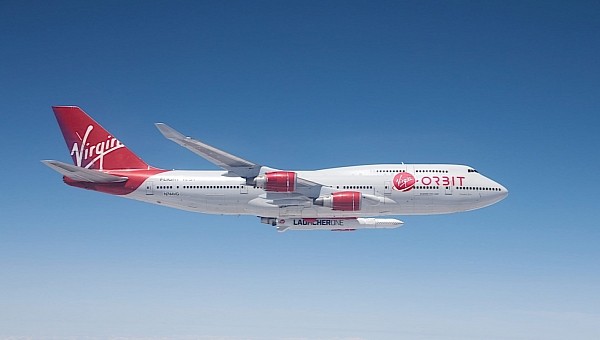On January 9, 2023, the so-called Spaceport Cornwall in the UK witnessed the take-off of a Boeing 747 called Cosmic Girl. The plane, belonging to Virgin Orbit, was carrying under its left wing a rocket called LauncherOne, in turn housing satellites for seven of the company’s commercial customers. It was supposed to be UK’s first orbital launch, but it failed.
The Boeing’s departure from the runway went without a hitch, and so did its ascent to the altitude required for separation. That went just fine as well, with the two-stage rocket successfully separating from the airplane's wing and reaching space. It’s there where something went wrong, and LauncherOne was unable to reach the target orbit, coming down as a hot ball of fire somewhere over the Canary Islands.
When it announced the failure, Virgin Orbit said it didn't know the exact reasons, and that it’ll have to look into the matter over the following weeks. Turns out, it took Virgin’s rocket scientists far less than that to come with an update.
As per the already public info, the Start Me Up mission (named so after a Rolling Stones hit from back in the 1980s) went with no problems through the first stages of the launch, with LauncherOne reaching a speed of 11,000 mph (17,700 kph) before the second stage ignited.
That happened with no problems as well, at an altitude of 180 km (112 miles) above the surface of the planet, but (and here comes the new bit of info Virgin made public) the second stage then called it quits and shut down prematurely. The reasons for this are not known at the moment, and the company has “begun an internal investigation into root causes.”
Those looking into the cause of the failure will have to comb “an enormous quantity of data” Start Me Up’s sensors were able to send back to mission control.
Virgin says the subsequent crash of the rocket (captured on film, check out the video below the text) occurred “within the approved safety corridor,” and the airplane that launched it returned safely to the airport.
Before going ahead with other launches, Virgin says this investigation will have to be completed first, and the required changes and fixes, if any, will have to be made to the remaining rockets. Until that happens, the company will continue final integration and checkout for the next LauncherOne mission.
As for Spaceport Cornwall, the British location seems to be taking all the heat for some reason. Although it says the site will continue to be used for future launches, that won’t happen until later this year. If any other missions will take place until then, Virgin will use its home base, if it can be called that, in the Mojave Desert.
When it announced the failure, Virgin Orbit said it didn't know the exact reasons, and that it’ll have to look into the matter over the following weeks. Turns out, it took Virgin’s rocket scientists far less than that to come with an update.
As per the already public info, the Start Me Up mission (named so after a Rolling Stones hit from back in the 1980s) went with no problems through the first stages of the launch, with LauncherOne reaching a speed of 11,000 mph (17,700 kph) before the second stage ignited.
That happened with no problems as well, at an altitude of 180 km (112 miles) above the surface of the planet, but (and here comes the new bit of info Virgin made public) the second stage then called it quits and shut down prematurely. The reasons for this are not known at the moment, and the company has “begun an internal investigation into root causes.”
Those looking into the cause of the failure will have to comb “an enormous quantity of data” Start Me Up’s sensors were able to send back to mission control.
Virgin says the subsequent crash of the rocket (captured on film, check out the video below the text) occurred “within the approved safety corridor,” and the airplane that launched it returned safely to the airport.
Before going ahead with other launches, Virgin says this investigation will have to be completed first, and the required changes and fixes, if any, will have to be made to the remaining rockets. Until that happens, the company will continue final integration and checkout for the next LauncherOne mission.
As for Spaceport Cornwall, the British location seems to be taking all the heat for some reason. Although it says the site will continue to be used for future launches, that won’t happen until later this year. If any other missions will take place until then, Virgin will use its home base, if it can be called that, in the Mojave Desert.










